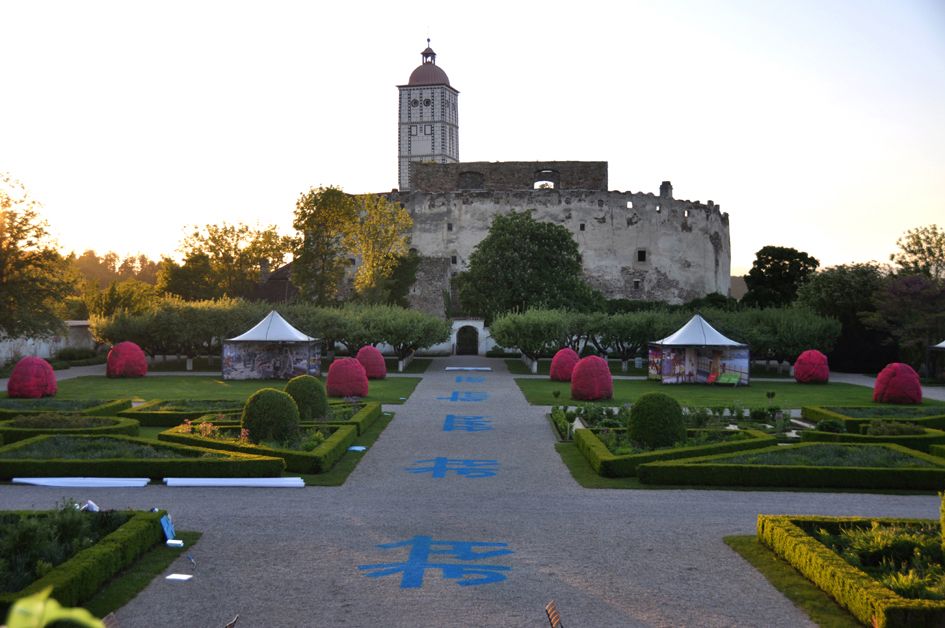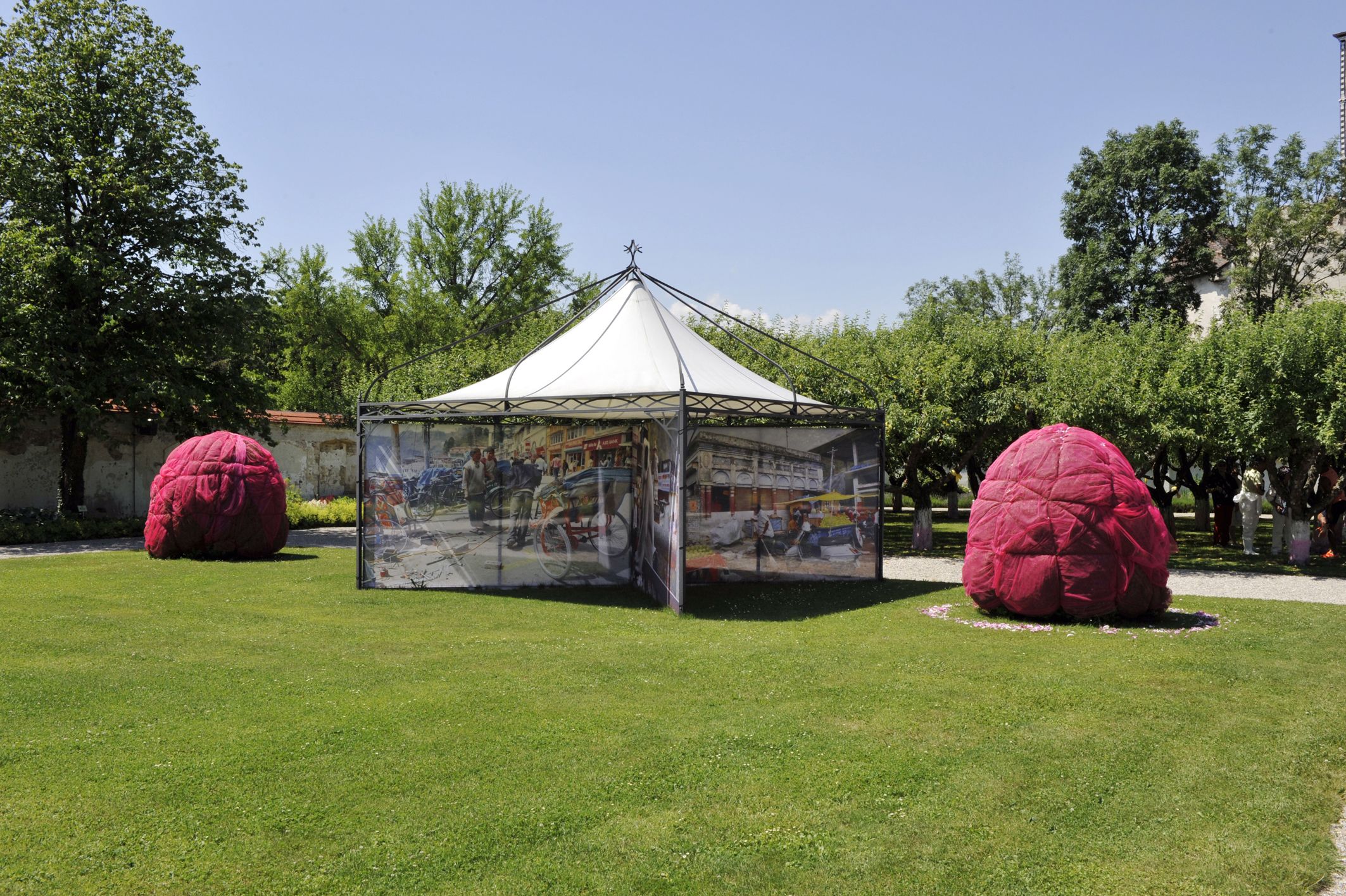GapStarPro
:
1200 Göttliche Jahre
Back
Information
As part of the exhibition India of the Maharajas at Schallaburg castle near Melk, the artist couple Rudolf Macher and Susen Okotie (GapStarPro) were asked to create an intervention on the castle grounds. They chose to approach the garden as a site of leisure and a so-called “third space” for encounters ruled by a "timeless time."
Time is the overarching theme that unites all six parts of the work. 1200 göttliche Jahre (1,200 Divine Years) is about the essence of a world that slowly but surely becomes part of, and affects us through, the unstoppable passing of time. 1,200 years is the duration of the current age of Kali Yuga (Iron Age) of Indian cosmology (in which time has a cyclical nature). It is seen as the last and shortest of four ages. "As time goes by" (Indian inscription) is written in sky-blue characters on the paths in the garden, fading a little more each time we walk over them. Eight boxtrees are wrapped in magenta colored fabric, standing out like powerful Shiva lingas (representations of the goddess Shiva in temples) that creating a frame for the open tents that display photographic scenes from today’s India: people working, children and mythological animals. The color-coded objects and the apple orchard in the background transform the entire scene into a garden of wishes where visitors can perform a wishing tree ritual according to Hindu tradition while doing some good work for children in Andhra Pradesh at the same time.
Walking up the steep path to the castle, we pass eight steles with numbers and signs written on them, like mantras. These steles radiate colorful light, depending on the position of the sun. They are an homage to the famous Indian mathematician and astronomer Aryabhata, who was able to accurately calculate the first five decimals of the number π. The Aryabhata steles display the first 1,000 decimals of this mysterious infinite number. The sound installation in the garden was created by Norbert Math. In terms of its tonal character, its structure is similar to classic Indian Raga music, which is essentially based on the relationship between two fundamental tones. Here, the tones consist of sound elements from GapStarPro’s first journey to India in 2009 and recitations of the Aryabhata code.




